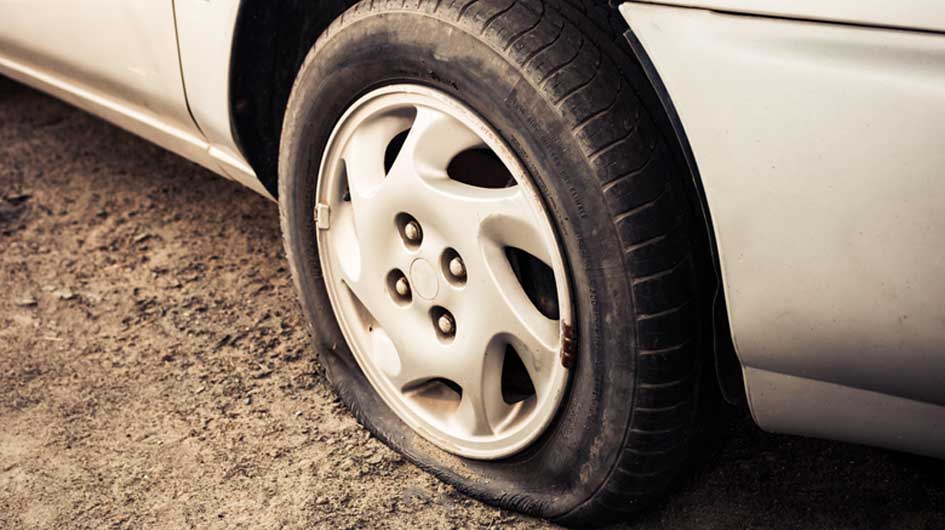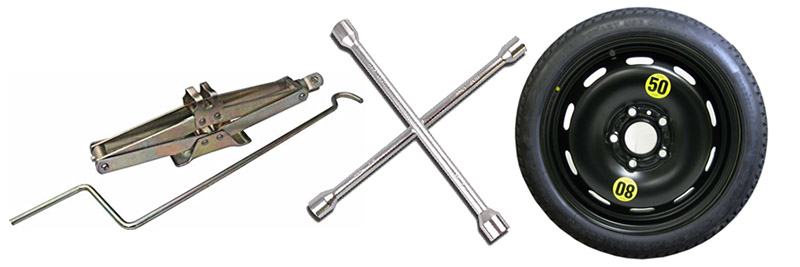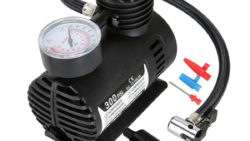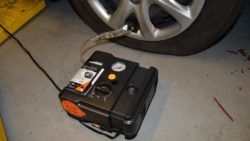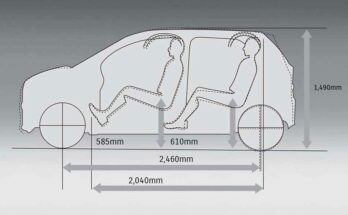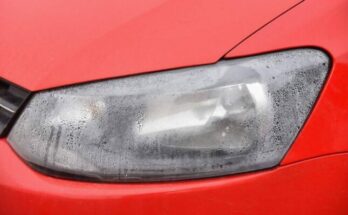Finding your car with a flat or punctured tire is one of the most annoying things that can happen. Doesn’t matter if you own an old car or a new one, a punctured tire situation is always inevitable.
Related: Plus Sizing- Advantages and Disadvantages
Knowing how to change a tire is a necessary skill for all drivers. Tires can go flat anywhere, anytime and for various reasons. Thankfully, changing a tire isn’t all that hard! Just follow these guidelines to be prepared in case you have a punctured tire.
You must have these items in your vehicle, before you start to change the tire:
- Jack
- Lug wrench
- Fully inflated spare tire
Always make sure the jack is properly functional. Keep it lubricated periodically even if it’s not used on regular basis. Checking and maintaining the air pressure of the spare tire is also a nice practice. You obviously don’t want to find any of these items out of order, or not present in your car whenever needed.
1. Find a Safe Location
As soon as you realize you have a flat tire, do not abruptly brake or turn. Slowly reduce speed and scan your surroundings for a level, straight stretch of road with a wide shoulder. Level ground is good because it will prevent your vehicle from rolling. Also, straight stretches of road are better than curves because oncoming traffic is more likely to see you.
Related: Beginner’s Guide: How To Read A Tire Sidewall
Never attempt to change your tire on a narrow shoulder near oncoming traffic. Keep moving (slowly) until you find a safer spot. While driving on a flat tire, there is always a risk of ruining your tire or the rim, but remember replacing a tire/ rim is better than being hit by an inattentive driver.
2. Turn on Your Hazard Lights
Turn on the hazard lights or ‘flashers’ as they will help other drivers to see you on the side of the road. To avoid an accident, turn them on as soon as you realize you need to pull over.
3. Apply the Hand Brake
Once stopped, always use the hand brake/ parking brake before replace a flat tire. This will minimize the possibility of your vehicle to roll off.
4. Loosen the lug nuts
Using the lug wrench, turn the lug nuts counterclockwise until you break their resistance. You may have to use force, and that’s ok. You’ll have to use your foot or all of your body weight if necessary. Remember to just loosen the lug nuts, but don’t remove them completely yet. Save that for when it’s time to remove your tire/wheel from the vehicle.
5. Place the Jack Under the Vehicle
The right place for the jack is usually beneath the vehicle frame alongside the tire that’s flat. Many vehicle frames have molded plastic on the bottom with a cleared area of exposed metal specifically for the jack. Remember to place the jack on a flat even surface. To safely lift and avoid damage to the vehicle, follow the instructions for jack placement in your vehicle owner’s manual.
6. Raise the Vehicle With the Jack
With the jack properly positioned, raise the vehicle until the flat tire is about six inches above the ground. Never put any part of your body under the vehicle during or after raising the vehicle with the jack.
7. Unscrew the Lug Nuts
Now remove the lug nuts all the way. Since you’ve already loosened them, you should be able to unscrew them quite easily.
8. Remove the Punctures Tire
Pull the punctures tire gently toward you until it’s completely free from the hub behind it. Set it on its side so that it doesn’t roll away.
9. Mount the Spare Tire on the Lug Bolts
Now place the spare on the hub by lining up the rim with the lug bolts. Push gently until the lug bolts show through the rim. You might also need to raise the height of the jack so that it fits the inflated spare wheel easily.
10. Tighten the Lug Nuts by Hand
Put the lug nuts back on the lug bolts and tighten them all the way by hand. Once they are all on, check each one again, tightening as much as possible. You will fully tighten them with the wrench after lowering the vehicle to the ground.
11. Lower the Vehicle and Tighten the Lug Nuts Again
Use the jack to lower the vehicle all the way to the ground and remove the jack. At this point, you should tighten the lug nuts with the wrench, turning clockwise, as much as you can. Push down on the lug wrench with the full weight of your body. Make sure the nuts are as tight as possible.
12.Put All the Equipment Back
You have before you a jack, a lug wrench and your flat tire. Don’t forget to put all of them back in your vehicle before driving away.

Things You Can Also Keep
To make your life easier, you can keep these things in your car in case you have to change a flat tire:
- A torch light- in case you need to change tire in the dark.
- Rubber gloves- to keep your hands tidy.
- A rain poncho- helpful when it’s raining and keep your clothes from getting dirty even when it’s not raining.
Advantages of Tubeless tires
Tubeless tires usually don’t go flat that easily, in most cases they can retain some air pressure which can help you reach the nearest tire mending shop. However in case of old cars, people prefer putting the tube in old tires that are done with their life. Never compromise on safety and replace the tires when they lose their tread.
Tire Air Compressors
Related: Importance Of Correct Tire Pressure
These days portable air compressors are quite cheap. You can get one as low as Rs 2,000. All you have to do is to connect them to the power outlet/ cigarette lighter of your car and they will inflate your tire. Do think of buying these low-cost inflators and keep with you in your car in case of any emergency need.
Preventing the Puncture:
Knowing how to fix a flat tire is great, but regular tire maintenance is vitally important too. Always remember to do the following:
- Keep your tires properly inflated
- Rotate your tires according to the manufacturer’s guidelines
- Keep an eye on the tread wear
All of these precautions will extend the life of your tires and reduce the chances of a puncture. While there’s no way to prevent flat tires completely, proper care can save you from a lot of hassle, improve tire performance and ensure that your tires last as long as possible.

A computer animation professional with over 23 years of industry experience having served in leading organizations, TV channels & production facilities in Pakistan. An avid car enthusiast and petrolhead with an affection to deliver quality content to help shape opinions. Formerly written for PakWheels as well as major publications including Dawn. Founder of CarSpiritPK.com

